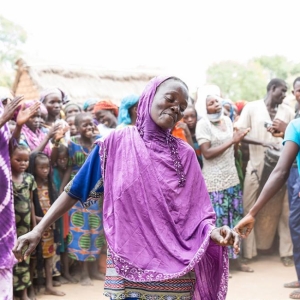Indicators in this domain assess the extent to which migrants have the same status as citizens in terms of access to basic social services such as health, education, and social security. It also describes the rights of migrants to family reunification, to work, and to residency and citizenship. The ratification of the main international conventions is also included within this domain.
Indicators in this category look at the extent to which migrants have access to certain social services such as health, education and social security. They also examine measures to ensure integration and access to work.
Indicators in this domain assess countries’ institutional, legal, and regulatory frameworks related to migration policies. Domain 2 also reviews the existence of national migration strategies that are in-line with development, as well as institutional transparency and coherence in relation to migration management. This domain also investigates the extent to which governments collect and use migration data.
Indicators in this category assess the institutional frameworks of cities for migration. This area also examines the existence of migration strategies consistent with development objectives, as well as institutional transparency and coherence in migration management.
This domain focuses on countries’ efforts to cooperate on migration-related issues with other states and with relevant non-governmental actors, including civil society organizations and the private sector. Cooperation can lead to improvements in governance by aligning and raising standards, increasing dialogue and providing structures to overcome challenges.
Indicators in this category focus on cities’ efforts to cooperate on migration issues with the national government as well as other cities and relevant non-governmental actors, including civil society organizations and the private sector.
This domain includes indicators on countries’ policies for managing the socioeconomic well-being of migrants, through aspects such as the recognition of migrants’ educational and professional qualifications, provisions regulating student migration and the existence of bilateral labour agreements between countries. Indicators equally focus on policies and strategies related to diaspora engagement and migrant remittances.
Indicators in this category assess cities’ initiatives in terms of international student mobility, access to the labour market and decent working conditions for migrant workers. Aspects related to diaspora engagement and migrant remittances are also included in this domain.
This domain studies the type and level of preparedness of countries when they are faced with mobility dimensions of crises, linked to either disasters, the environment and/or conflict. The questions are used to identify the processes in place for nationals and non-nationals both during and after disasters, including whether humanitarian assistance is equally available to migrants as it is to citizens.
Indicators in this category examine the type and level of readiness of cities to deal with aspects of mobility crises. The questions focus on the processes in place for citizens and non-citizens both during and after disasters, especially if humanitarian assistance is available for migrants and citizens.
This domain analyses countries’ approach to migration management in terms of border control and enforcement policies, admission criteria for migrants, preparedness and resilience in the case of significant and unexpected migration flows, as well as the fight against trafficking in human beings and smuggling of migrants. It also assesses efforts and incentives to help integrate returning citizens.
Indicators in this category look at the cities’ approaches to migrant safety as well as return and reintegration policies and the fight against trafficking in persons.
This country Profile describes examples of well-developed areas of the Islamic Republic of Mauritania’s (hereafter referred to as Mauritania) migration governance structures and areas with potential for further development, as evaluated through the six domains of the Migration Governance Indicators (MGI). These address migrants’ rights, a “whole-of-government” approach, partnerships, socioeconomic well-being of migrants, the mobility dimensions of crises, and safe and orderly migration.
Click the icons on the wheel to explore the key findings.
The Migration Governance Indicators (MGI) initiative is a policy-benchmarking programme led by the International Organization for Migration (IOM) and implemented with research and analysis from the Economist Intelligence Unit. Funding is provided by IOM Member States.
Migration Governance: examples of well-developed areas
- Migrants with a residence permit have equal access to public and private medical services as Mauritanian nationals.
- The national Labour Code covers both national and migrant workers.
- Mauritania offers a pathway to citizenship to permanent residents.
Areas with potential for further development:
- Children of migrants who do not possess a birth certificate cannot access education.
- There is no clear procedure for family reunification for migrants in Mauritania.
Migration Governance: examples of well-developed areas
- The Ministry of Interior is responsible for designing, coordinating and implementing plans and strategies related to migration in Mauritania.
- The Directorate for Mauritanians Abroad and Consular Affairs within the Ministry of Foreign Affairs and Cooperation is responsible for the documentation of and providing consular assistance to Mauritanians abroad.
- The Ministry of Tertiary Education manages a portal for diaspora engagement.
Areas with potential for further development:
- Mauritania’s national migration strategy was only partially implemented and the related action plan is currently under revision
- Data collected by the Directorate for the Surveillance of the Territory on migrants entering or exiting the country is available on demand but not published.
Migration Governance: examples of well-developed areas
- Mauritania has signed several Memorandums of Understanding on migration with neighbouring countries
- Mauritania signed an association agreement with the Economic Community of West African States (ECOWAS) on strengthened partnerships in several areas of common interest, such as encouraging the free movement of persons.
- Mauritania is also a Member State of the Arab Maghreb Union (AMU) which encourages the movement of people and goods between Mauritania and other member States.
Areas with potential for further development:
- The country has not signed any regional agreements promoting the mobility of labour.
- There is no formal collaboration between government, civil society, the private sector and the diaspora in relation to migration policy and its implementation.
Migration Governance: examples of well-developed areas
- Mauritania has signed a Convention on Social Security with France which concerns in particular the reciprocity of social security schemes for migrant workers of the two countries.
- The Central Bank of Mauritania promotes the flow of remittances through formal channels, establishes a list of authorized remittance service providers and penalizes those involved in irregular practices.
Areas with potential for further development:
- There is no specific programme for the management of labour migration to the country.
- Mauritania has not developed data collection or protection mechanisms for its nationals working abroad.
Migration Governance: examples of well-developed areas
- The Directorate General for Civil Protection has an internal plan for the management of crises caused by natural disasters and resulting in the displacement of people in borders area.
- National policies promote the reintegration of Mauritanians repatriated from Senegal and Mali, having fled the country during periods of crisis.
- Regular migrants residing in Mauritania benefit from the protection of the law for their persons and assets under the Mauritanian Constitution.
Areas with potential for further development:
- Mauritania does not have early warning systems and alarms in place to communicate information on the evolving nature of crises and how to obtain assistance.
Migration Governance: examples of well-developed areas
- Mauritania has in place a set of laws and regulations as well as a draft Action Plan aiming to combat human trafficking and labour exploitation.
- Mauritania has concluded several formal and informal agreements with neighbouring countries and destination countries such as the United Arab Emirates, the French Republic and the Kingdom of Spain on the management of migratory flows, including combating migrant smuggling.
Areas with potential for further development:
- There is no formal government programme or specific policy aimed at attracting or promoting the reintegration of nationals who have emigrated from the country.
2019 December




